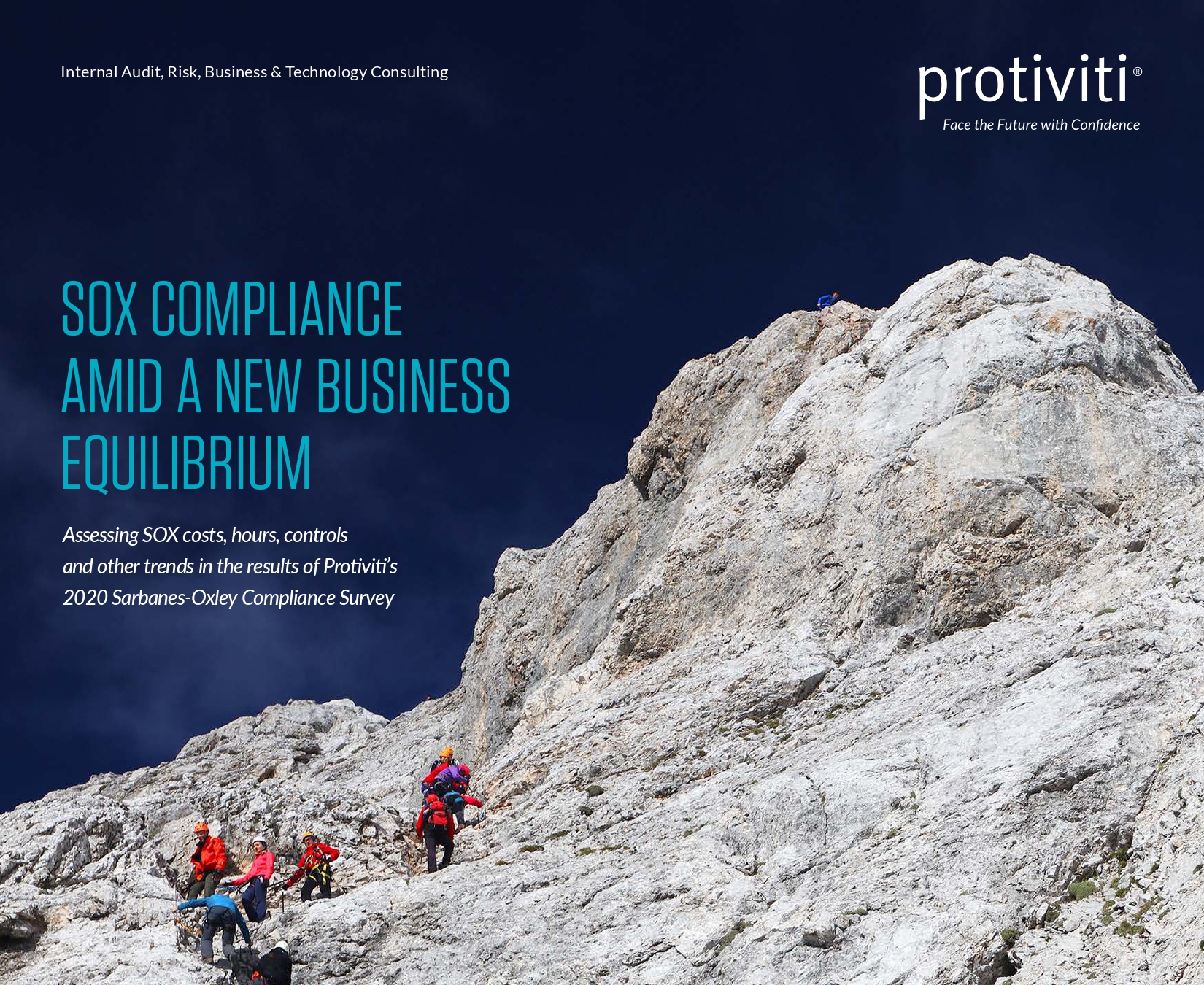2020 Sarbanes-Oxley Compliance Survey

SOX Compliance Amid a New Business Equilibrium
The world has changed. But SOX work goes on. Organizations required to comply with the Sarbanes-Oxley Act no doubt are experiencing this sentiment firsthand in recent weeks. The COVID-19 global pandemic has caused seismic shifts in companies of all sizes. The impact worldwide has been well-documented and will continue to evolve not only for the remainder of 2020, but certainly in the years to come as organizations transition to the new equilibrium.
We conducted this year’s Sarbanes-Oxley Compliance Survey in the first quarter of 2020, before the full scope and impact of the COVID-19 pandemic was realized. However, since the results largely reflect SOX programs and work performed in fiscal year 2019, the findings remain highly relevant. In addition, trends we’ve identified with regard to the use of automation and technology tools are illuminated even further in this crisis, with offices worldwide closed and a massive percentage of the workforce — likely more than at any time in history — working remotely.
These are unprecedented times. But CAEs and internal audit and SOX leaders understand their obligations to continue performing internal controls reviews and testing. And as we learned from our survey, challenges regarding managing costs and time are addressed, as well as leveraging automation and technology tools to achieve long-term savings and efficiencies. We present data points and insights on these and numerous other SOX issues in our 2020 Sarbanes-Oxley Compliance Survey.
Key findings include:
- Costs continue to rise. This has been a long-term trend in our study, reflected in both internal SOX compliance costs and related external auditor fees. SOX compliance requirements are unlikely to change significantly — to drive down costs over the long term, greater use of data, automation and technology tools is key.
- Hours are increasing. Commensurate with costs, SOX compliance-related hours are on the rise, as well. And similar to cost trends, organizations have an opportunity to reduce hours through increased use of data and technology, including automation as well as collaboration and workflow tools.
- It’s time to embrace automation. Long-term trends showing slow but steady increases in SOX costs and hours are unlikely to change. Automated processes and controls, along with utilization of technology tools to test controls, can create long-term efficiency, increased accuracy, and measurable time and cost savings. Of note, this also is advantageous during times such as the COVID-19 pandemic, when offices are shuttered and staff are working remotely.